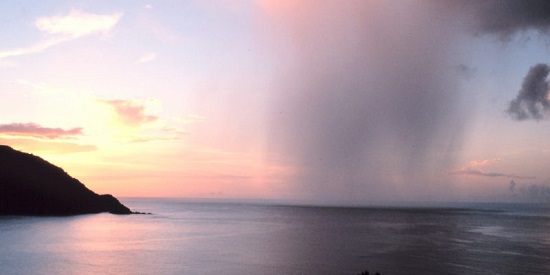
Story of the Week... Opinion of the Week... El Niño/La Niña Update... Toon of the Week... SkS in the News... SkS Spotlights... Video of the Week... Reports of Note... Coming Soon on SkS... Poster of the Week... SkS Week in Review... 97 Hours of Consensus...
While more rain normally cools a summer environment, a warmer and wetter world could face quite unfamiliar problems.

Climate change may still cause surprises, if simultaneously it means a warmer and wetter world. More heat and moisture together can unbalance ecosystems.
Scientists have been warning for decades of shifts towards ever greater risks of flooding in some places, more intense and sustained droughts and potentially lethal heatwaves in others.
But new research suggests an unexpected twist: temperate and subtropical zones could become both hotter and wetter during future summers.
And this could create a whole suite of unexpected problems: farmers and city dwellers who have adapted to a pattern of cool wet summers or hot dry summers could face a new range of fungal or pest infections in crops, or pathogens in crowded communities, as insects and microbes seize a new set of opportunities.
Canadian scientists report in Nature Communications that they considered what they call “departures from natural variability” that may follow as a consequence of continual rises in global average temperature, driven by ever greater combustion of fossil fuels that emit ever higher ratios of greenhouse gases into the atmosphere.
Climates change faster in a warmer and wetter world by Tim Radford, Climate News Network, Mar 16, 2018
Making up for years of delay and denial will not be easy, nor will it be cheap. Climate polluters must be held accountable
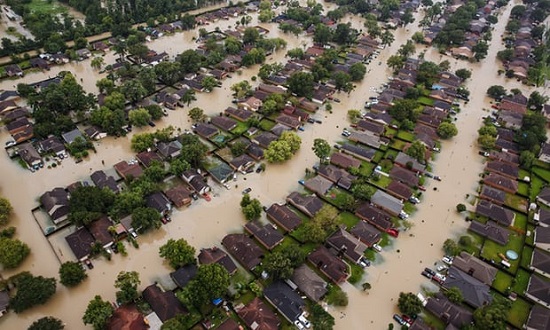
Fifty years ago, the Stanford Research Institute (SRI) delivered a report titled Sources, Abundance, and Fate of Gaseous Atmospheric Polluters to the American Petroleum Institute (API), a trade association for the fossil fuel industry.
The report, unearthed by researchers at the Center for International Environmental Law, is one of the earliest attempts by the industry to grapple with the impacts of rising CO2 levels, which Stanford’s researchers warned if left unabated “could bring about climatic changes” like temperature increases, melting of ice caps and sea level rise.
The year was 1968, and the term “global warming” would not appear in a peer-reviewed academic journal until 1975. Famed Nasa scientist James Hansen would not testify before Congress that “global warming has begun” for another 20 years. And the US would not enter into – only to later pull out of – the Paris climate accord for nearly half a century.
It's 50 years since climate change was first seen. Now time is running out.Opinion by Richard Wiles, Climate, Guardian, Mar 15, 2018
The 2017–18 La Niña has ended. El Niño–Southern Oscillation (ENSO) indicators have eased back to neutral levels over the past several weeks. This means the ENSO Outlook has shifted from LA NIÑA to INACTIVE.
The end of the La Niña is clear in oceanic and atmospheric indices. Sea surface temperatures have warmed steadily since December, and are now in the neutral range. Waters beneath the surface have also warmed. In the atmosphere, cloudiness near the Date Line has returned to near-average levels, and trade winds are generally near average across the equatorial Pacific. Likewise, the Southern Oscillation Index (SOI) is well within the neutral range.
Most models indicate that ENSO-neutral is the most likely scenario through the southern hemisphere autumn and into winter. However, model accuracy during autumn is lower than at other times of year. A neutral ENSO pattern does not necessarily signify average rainfall and temperature for Australia. Rather, it indicates a reduced chance of prolonged very wet or dry, or very hot or cold conditions, and that other climate drivers may have greater influence over the coming months.
The weak and short–lived La Niña had relatively little effect on Australian rainfall patterns over the 2017–18 summer. However, it may have kept temperatures higher than average in southern parts of the country due to weather patterns being slower moving, and further south than normal.
The Indian Ocean Dipole (IOD) is currently neutral. IOD events are unable to form between December and April. Current outlooks suggest a neutral IOD for autumn and early winter.
La Niña ends, El Niño-Southern Oscillation returns to neutral, ENSO Warp-up Australian Bureau of Meteorology, Mar 13, 2018
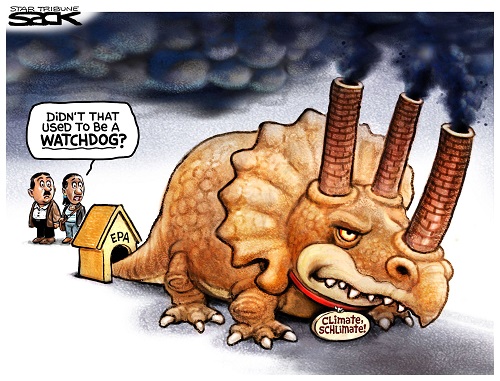
Hat tip to Stop Climate Science Denial
In his Discover Magazine article, Here’s what real science says about the role of CO2 as Earth’s preeminent climatic thermostat,Tom Yulsman cites and links to two SkS articles:
Operative paragraph #1:
For more details about the Ordovician glaciation and related issues, the website Skeptical Science has an excellent overview. And for a broad overview of CO2’s role in Earth’s climate over geological history, check out this lecture by Richard Alley, a renowned Penn State geoscientist:
The first link embedded in the above paragaph is to the SkS rebuttal article, Do high levels of CO2 in the past contradict the warming effect of CO2?
Opeartive paragraph #2:
This general picture leaves out some important details, such as the role of fresh water flowing into the oceans as ice sheets melt. A 2012 study led by Jeremy Shakun, now a Boston College climatologist, examined some of these details. Skeptical Science posted an excellent explainer about the results here. But the upshot of the study was this: “While the orbital cycles triggered the initial warming, overall, more than 90% of the glacial-interglacial warming occured after that atmospheric CO2 increase.”
The link embedded in the above is to the SkS blog post article, Shakun et al. Clarify the CO2-Temperature Lag by Dana Nuccitelli, April 10, 2012
![]()
Since 1989, the Center for International Environmental Law (CIEL) has used the power of law to protect the environment, promote human rights, and ensure a just and sustainable society. CIEL seeks a world where the law reflects the interconnection between humans and the environment, respects the limits of the planet, protects the dignity and equality of each person, and encourages all of earth’s inhabitants to live in balance with each other.
CIEL pursues its mission through legal research and advocacy, education and training, with a focus on connecting global challenges to the experiences of communities on the ground. In the process, we build and maintain lasting partnerships with communities and non-profit organizations around the world.
Arctic Permafrost Thaw Looks Alien, Accelerates, Climate State, Mar 16, 2018
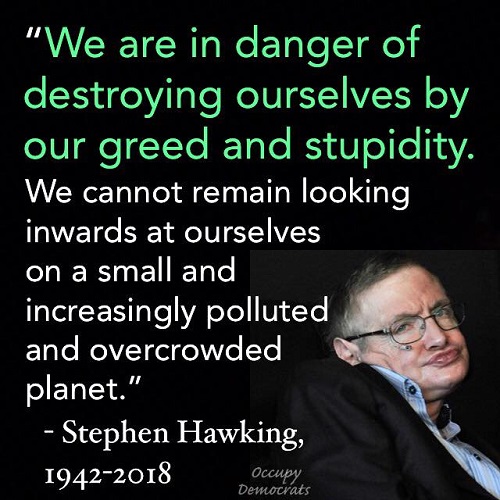
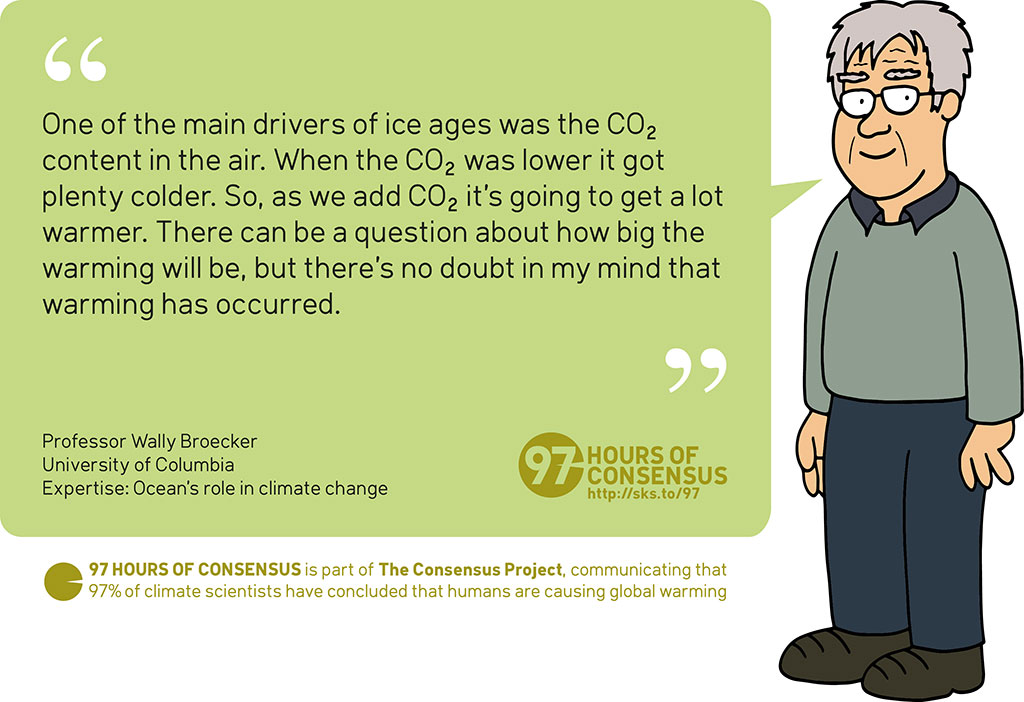
Wally Broecker's bio page and quote source.
High resolution JPEG (1024 pixels wide)
Posted by John Hartz on Sunday, 18 March, 2018
 |
The Skeptical Science website by Skeptical Science is licensed under a Creative Commons Attribution 3.0 Unported License. |